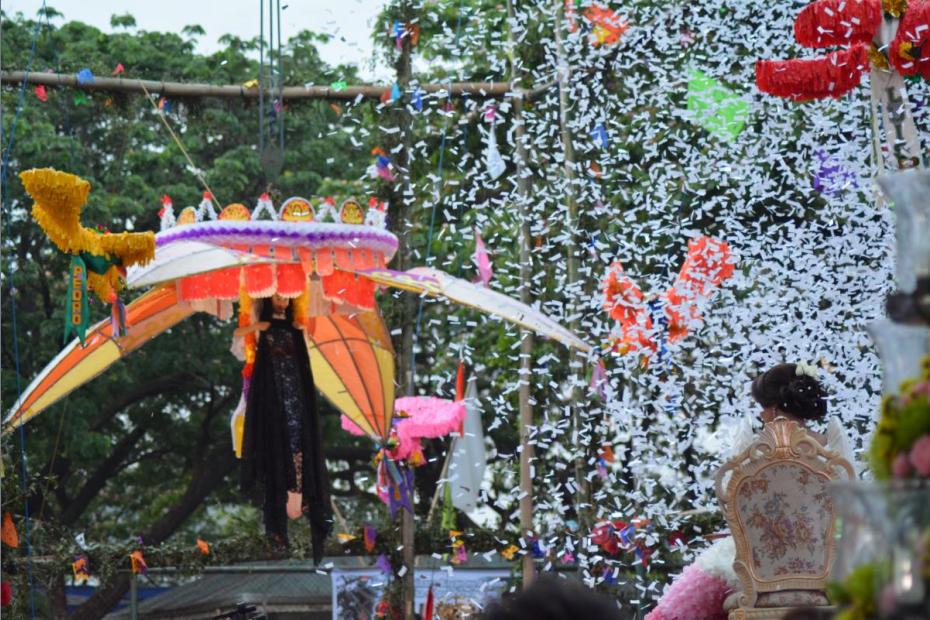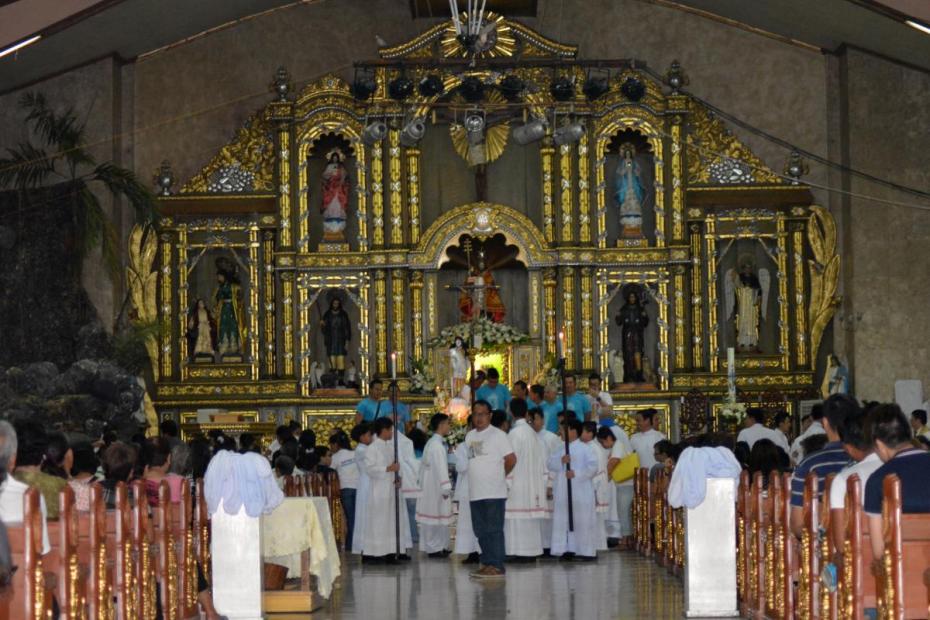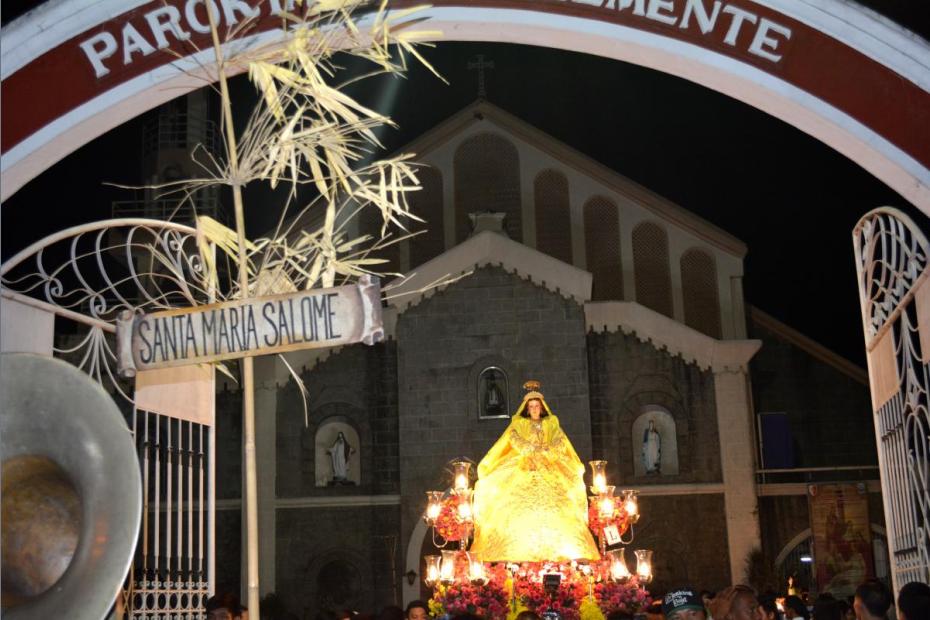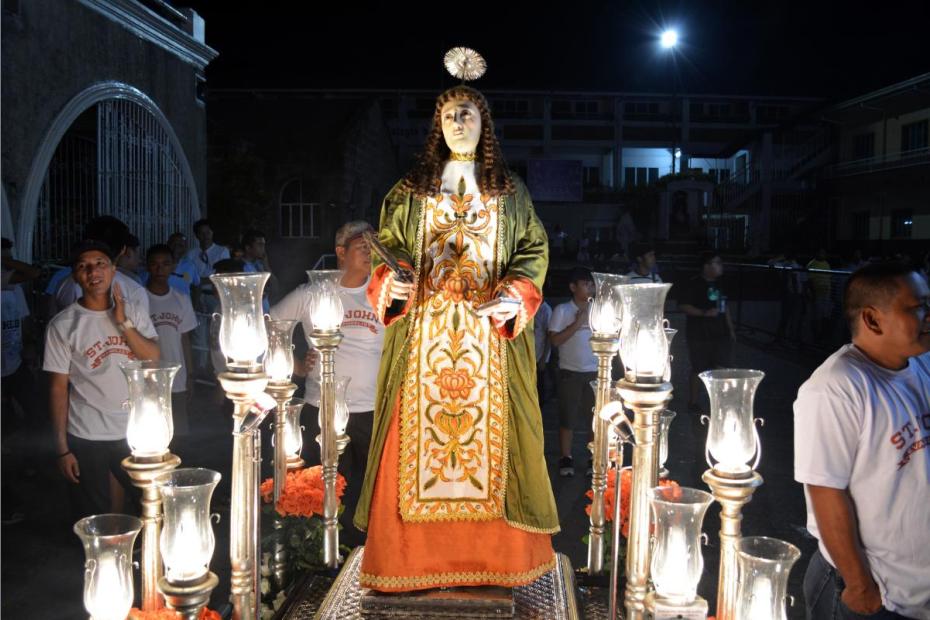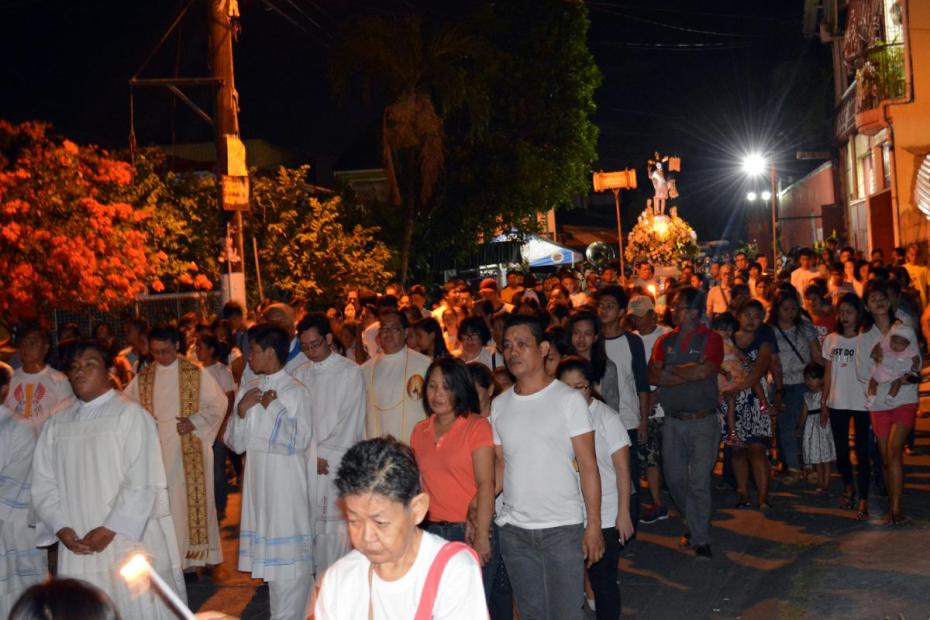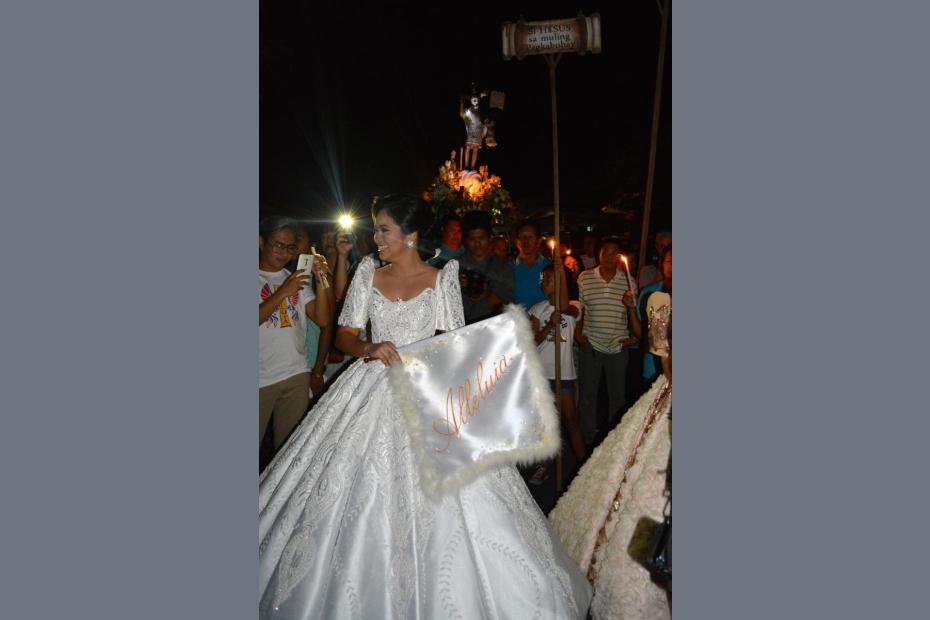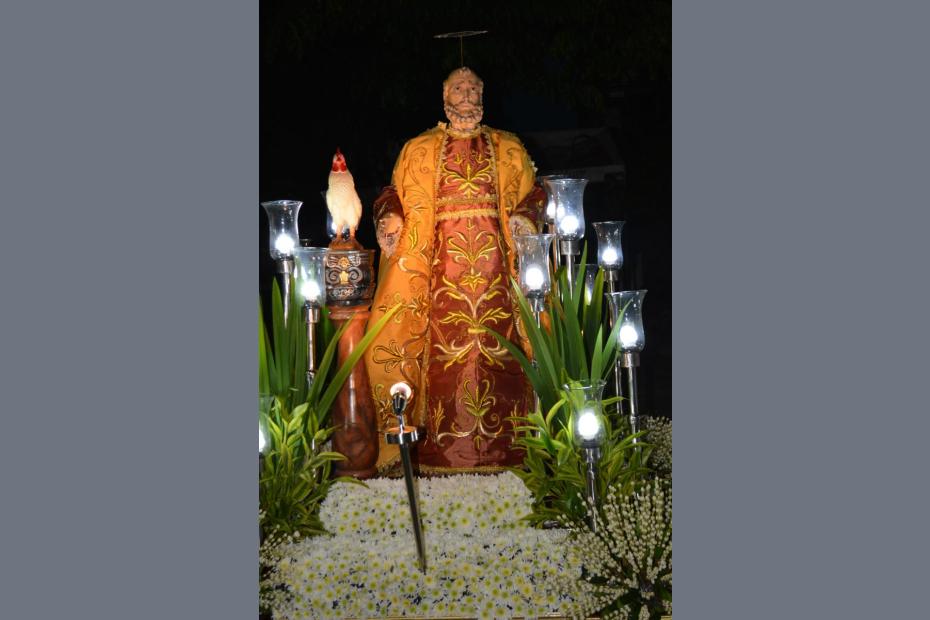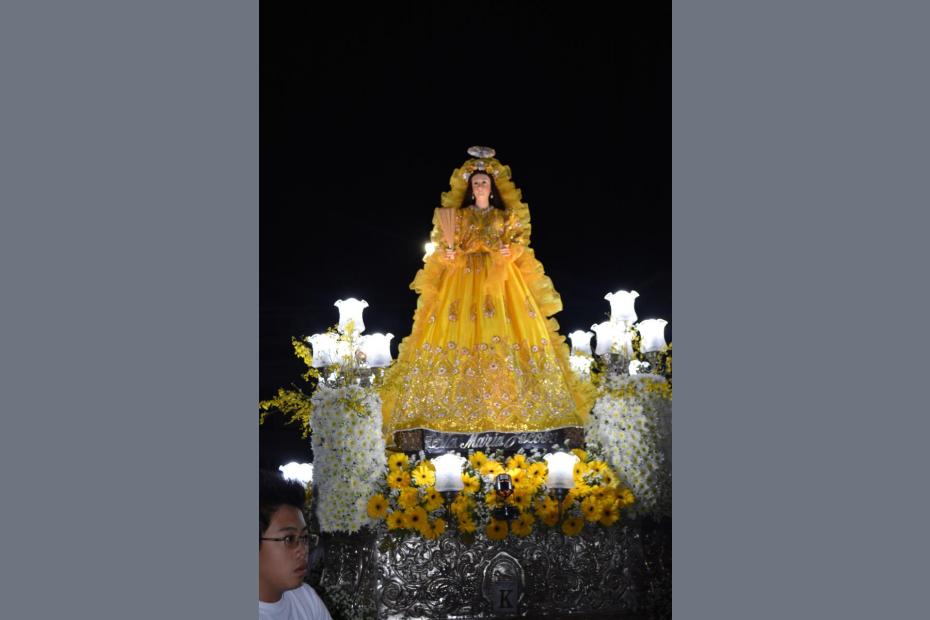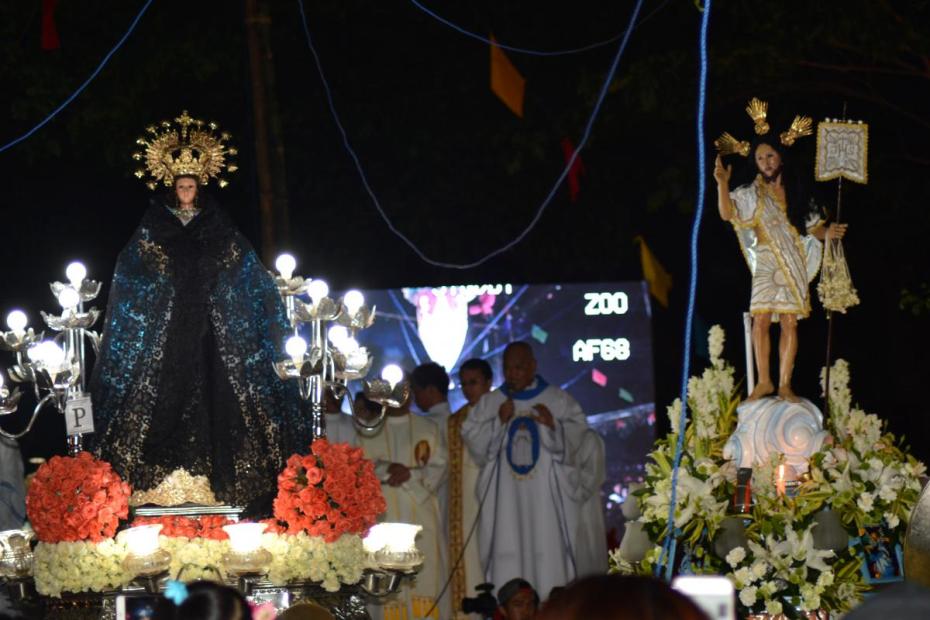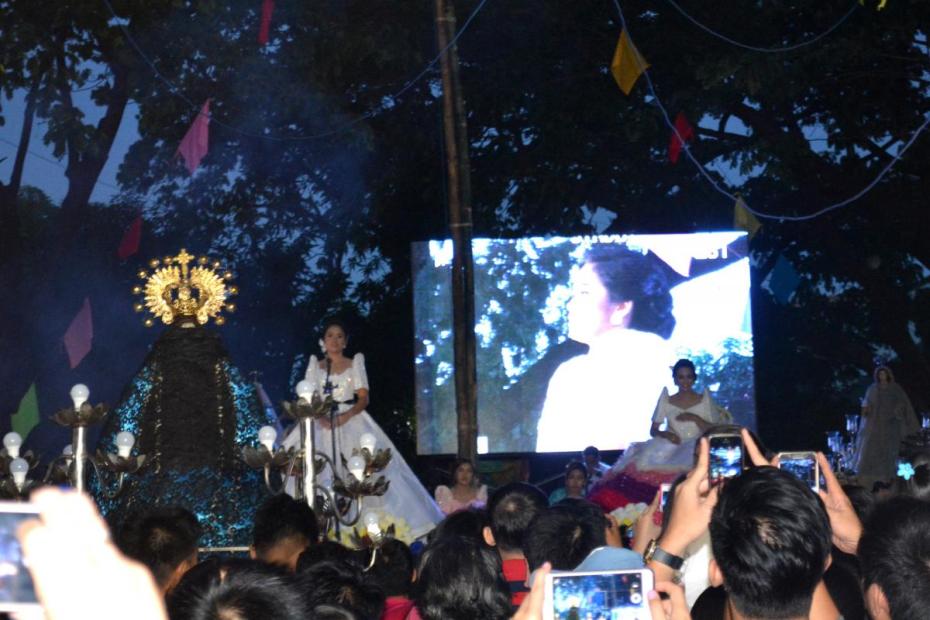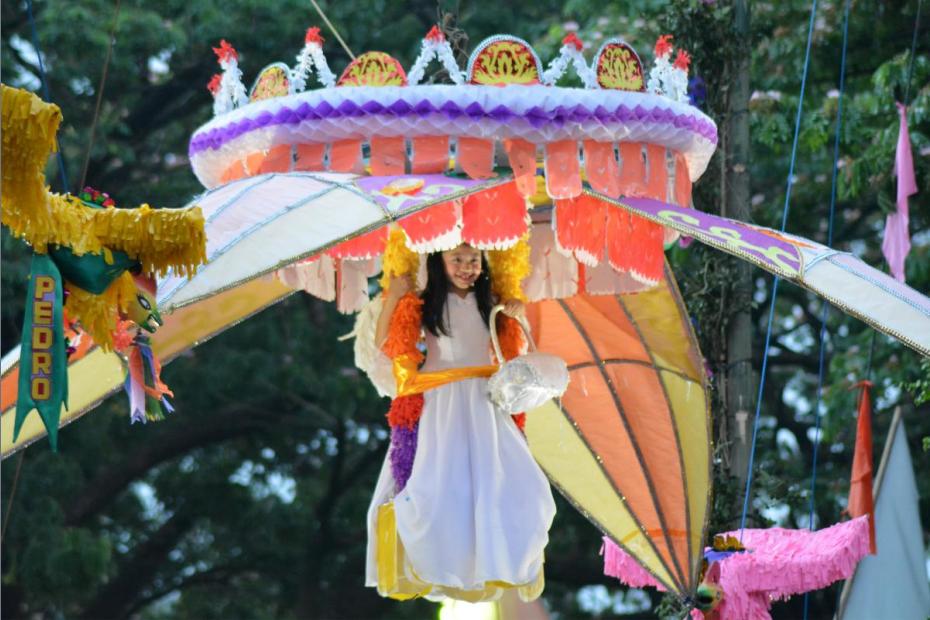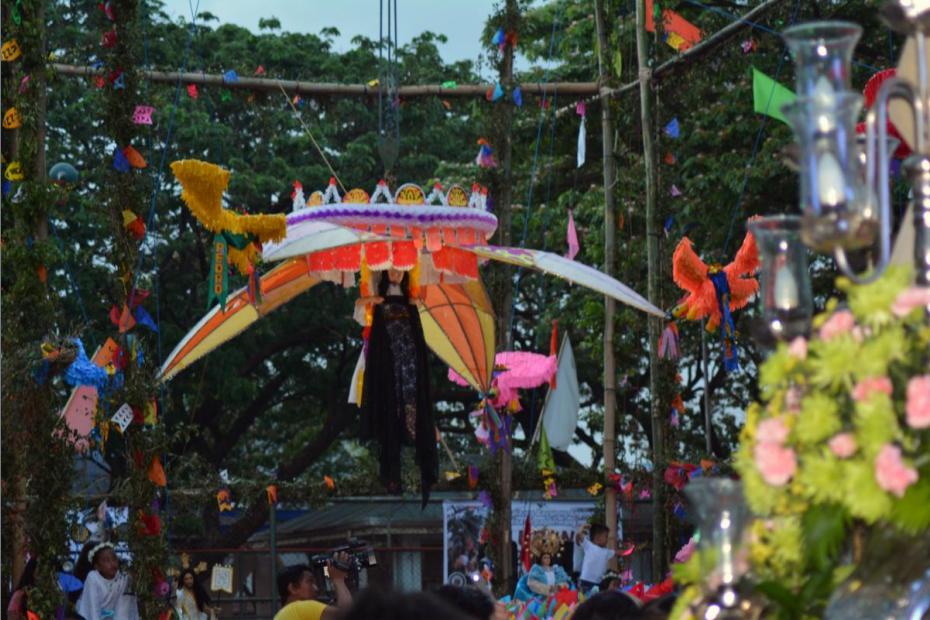As is the case for many important feasts, the Filipino celebration of Easter begins before dawn. Many Filipinos rise by 3 or 4 a.m. for a ritual procession called Salubong, or welcome. St. Clement's parish, Angono, Rizal, known for its elaborate celebration of Salubong, is featured here.
Salubong is a pre-dawn meeting of two processed images, one of the Risen Christ, and the other of a still-mourning Mary. The statue of Mary, covered in a black mourning dress, is carried by the women of the town along one route, along with statues of the saints who had been with Jesus in the days before and after his death. (As is the case on most other processions in the Philippines, the saints' statues belong to pious families in town who care for them and showcase them in their homes year round). The statue of the Risen Christ is carried by men along a different route.
Crowds of people join both processions. Their destination is an outdoor stage, decorated for the occasion, where the images of Jesus and Mary meet.
On the stage, a ritual of singing and dancing marks the meeting of the images. Young women, specially chosen each year for this honor, have the leading roles in those ceremonies. They wear elaborate, ruffled dresses, and have a band to accompany them. One woman, filling a role called tenyenta, dances a bati, a dance of thanksgiving and welcome, waving a white satin flag that proclaims "Alleluia." The other, known as a kapitana, sings a song that recounts Mary's role in Jesus' life. A colorful, giant paper banana blossom hangs above the stage just above where Mary's statue is placed. Eventually a mechanism opens the banana blossom to reveal a young girl dressed as an angel in white. She sings Regina Coeli as she is lowered to Mary's statue. As confetti drops around her, she removes Mary's black veil of sorrow. Participants join in the celebration of the Resurrection and the end of Mary's sorrow.
Following the meeting, the procession proceeds to the church for the many masses that follow during the day.
